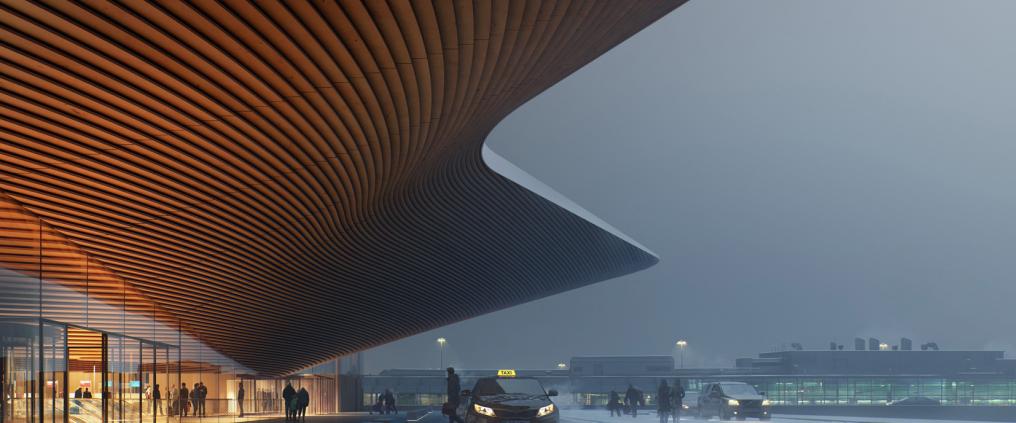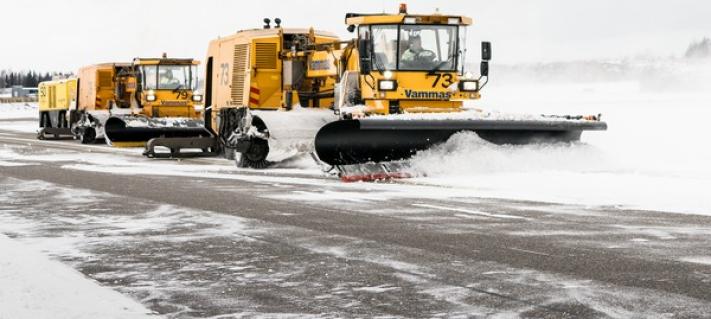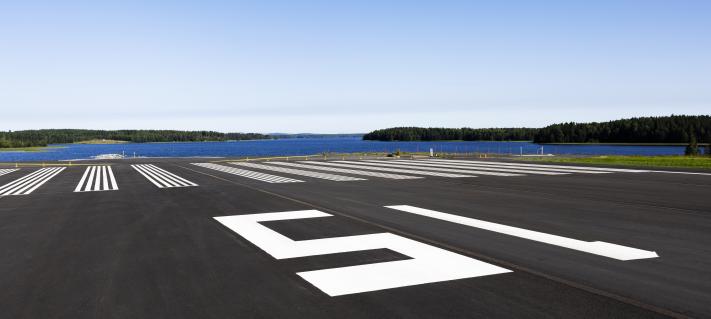Finavia works on a long-term basis to reduce the environmental impact of the operations of its airports. This is also the case with the Helsinki Airport Development Programme: environmental aspects are taken into account in the construction of the terminal and traffic areas and the renovation of the apron.
Towards a solution that is 30% more energy-efficient than the regulations require
Finavia’s climate programme aims to reduce the company’s carbon dioxide emissions from its own operations to zero. The company’s airports have been carbon neutral since 2019. Carbon neutrality was achieved by first minimising the carbon dioxide emissions from Finavia’s operations and then offsetting the remaining emissions. The next goal is to achieve net zero emissions.
“The upgrading of the property and its systems aims to significantly reduce energy consumption. The goal of the development programme is to build a building that is 30% more energy-efficient than the regulations require,” says Finavia’s System Manager Reijo Särkkä.
The Aukio, West Pier and South Pier of the Terminal 2 extension have been awarded a BREEAM certificate (Building Research Establishment Environmental Assessment Method) for the property’s comprehensive environmental efforts and sustainability. In the BREEAM assessment, the extension reached the Excellent level, which is the second best in the five-step scale.
The certificate is also being sought for the new entrance building.
“The new buildings are heated and cooled with low-temperature radiators and panels. The entrance building has air source heat pumps. The heat recovered by these pumps is used in the parking building. The interior lighting is controlled by an intelligent system so that the lights dim or turn off when daylight is coming through the large windows of the terminals.”
The old light fittings at the airport have been replaced by energy-efficient LED light fittings since 2014.
Electricity produced by the building’s own solar panels
As a result of the development programme, three solar power systems have also been installed at Helsinki Airport. The systems contain a total of 2,100 panels, which produce a total of 660 kilowatts of energy at best. The first two systems were installed on the roof of the terminal building. They are capable of generating about five per cent of the electricity consumed by the terminals – the most in the summer when there is plenty of light.
“The solar electricity generated by almost 700 panels installed on the wall of the new parking building is used for charging electric cars. If the solar panels produce more electricity than what is needed for charging, the excess is used by the property.”
During demolition and construction work, special attention has been paid to dust control. Dust is generated, for example, by the dumping of soil and the crushing of stone.
“Airborne dust can affect the safety of air traffic and harm people in the area. Dust is prevented by wetting the soil and covering the stone being crushed,” says Kirsi Pitkäranta, Finavia’s Environmental Manager.
Waste materials generated on site are recycled and reused on site.
“Concrete, metals and wood waste have been delivered for recovery through waste handlers. Crushed asphalt has been reused at the airport as surface layers of service roads and in the field structures of snow and storage areas. Good soil is also recovered and reused.
Read more about Finavia’s environmental efforts on our responsibility page and our Annual and Responsibility Report.
The Airport of the Future article series shares stories and interesting details behind the Helsinki Airport Development Programme. Helsinki Airport is in the middle of the largest extension project in its history. The goal of Finavia’s giant investment is to develop the airport’s services and customer experience as well as strengthen Helsinki Airport’s position as one of Europe’s leading transfer airports.
We will open the doors and welcome all to the Airport of the future 1st of December 2021.



